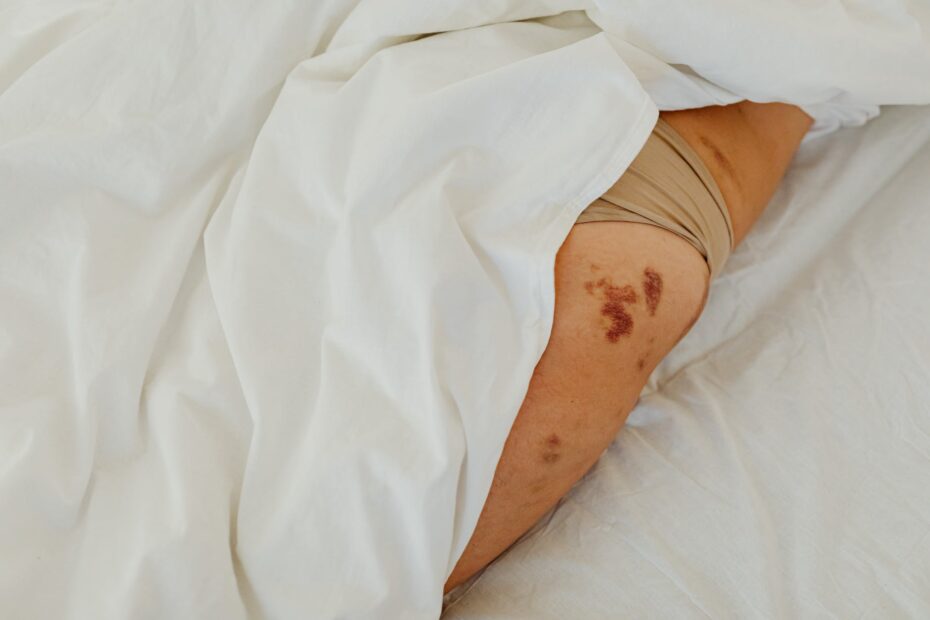Banish Chafing Marks for Good: Unmasking the Secrets to Smooth Skin!
Are you tired of dealing with chafing marks and irritated skin? Well, fret no more! In this article, we will reveal the secrets to achieving smooth, chafe-free skin. Say goodbye to discomfort and hello to confidence!
First, let’s delve into the causes of chafing. Chafing occurs due to friction, moisture, and clothing choices. When these elements come into play, they can lead to skin irritation and those dreaded chafing marks. But fear not, there are ways to prevent this pesky problem!
To banish chafing marks, it’s crucial to take preventive measures. One effective technique is using lubricants, such as petroleum jelly or anti-chafing balms, to reduce friction. Additionally, opt for moisture-wicking fabrics that keep your skin dry and comfortable. And don’t forget to maintain proper hygiene to minimize the risk of chafing.
If chafing does occur, there are remedies to heal and soothe irritated skin. Natural remedies like aloe vera gel or coconut oil can provide relief and promote healing. You can also explore over-the-counter products specifically designed to alleviate chafing symptoms.
So, there you have it! By following these tips and techniques, you can bid farewell to chafing marks and hello to silky-smooth skin. Don’t let chafing hold you back any longer. Embrace the secrets to smooth skin and enjoy a chafe-free life!
Causes of Chafing
Chafing occurs when the skin is exposed to constant friction, which can lead to irritation and discomfort. There are several factors that contribute to chafing, including:
- Friction: When the skin rubs against itself or against clothing, it can cause friction that leads to chafing. This is especially common in areas where the skin folds or where there are repetitive movements.
- Moisture: Sweat and moisture can exacerbate chafing by creating a damp environment that softens the skin and makes it more prone to friction.
- Clothing choices: Wearing tight or rough fabrics that don’t allow for proper airflow can increase the likelihood of chafing. Additionally, seams or tags on clothing can rub against the skin and cause irritation.
Understanding these elements is crucial in preventing and managing chafing. By addressing the causes, you can take proactive steps to protect your skin and maintain its smoothness.
Prevention and Remedies
When it comes to preventing chafing, there are several practical tips and techniques that can help keep your skin smooth and irritation-free. One effective method is to use lubricants, such as petroleum jelly or anti-chafing balms, on areas prone to friction. These products create a protective barrier that reduces friction and minimizes the chances of chafing.
Another key prevention technique is to choose moisture-wicking fabrics for your clothing. These fabrics are designed to draw moisture away from the skin, keeping you dry and reducing the risk of chafing. Look for clothing made of materials like nylon, polyester, or spandex, which are known for their moisture-wicking properties.
Maintaining proper hygiene is also essential in preventing chafing. Make sure to keep the affected areas clean and dry, especially after physical activity or sweating. Regularly showering and using talcum powder or cornstarch can help absorb excess moisture and prevent chafing.
If you’re looking for natural remedies and products to alleviate chafing symptoms, there are several options available. Aloe vera gel, for example, has soothing properties that can help calm irritated skin. Applying a thin layer of aloe vera gel to the affected area can provide relief and promote healing.
Additionally, there are specialized anti-chafing creams and powders available in the market that are formulated to reduce friction and soothe chafed skin. These products often contain ingredients like chamomile, calendula, or tea tree oil, which have anti-inflammatory and healing properties.
By following these practical tips and exploring natural remedies and products, you can effectively prevent chafing and find relief from any discomfort caused by this common skin issue.
Frequently Asked Questions
- Q: What is chafing and what causes it?
A: Chafing is the irritation and redness that occurs when the skin rubs against itself or clothing. It can be caused by friction, moisture, and certain types of clothing materials.
- Q: How can I prevent chafing?
A: There are several ways to prevent chafing. Firstly, make sure to wear moisture-wicking fabrics that help keep your skin dry. Applying a lubricant or anti-chafing balm to areas prone to chafing can also reduce friction. Additionally, maintaining good hygiene and keeping your skin well-moisturized can help prevent chafing.
- Q: What are some natural remedies for chafing?
A: Natural remedies for chafing include applying aloe vera gel, coconut oil, or chamomile tea compress to the affected area. These ingredients have soothing properties that can help alleviate discomfort and promote healing.
- Q: How long does it take for chafed skin to heal?
A: The healing time for chafed skin can vary depending on the severity of the irritation. In most cases, mild chafing can heal within a few days with proper care and treatment. However, if the chafing persists or worsens, it is advisable to consult a healthcare professional.
- Q: Can chafing occur in any part of the body?
A: Yes, chafing can occur in various parts of the body where there is friction or moisture build-up. Common areas prone to chafing include the inner thighs, underarms, nipples (in both men and women), and areas where tight clothing or sports equipment rub against the skin.


Keith is originally from Truckton, Colorado. The 54-year-old cared for his overweight wife for many years. Keitch is also a freelance editor at antichafing.net and supports the team as a competent advisor. In his spare time Keith enjoys reading books, visiting his homeland and is a passionate product tester for well-known manufacturers.

